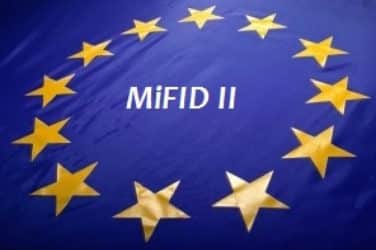
Among the myriad provisions embedded in Markets in Financial Instruments Directive II, transaction reporting and best execution are among the thorniest for buy-side asset managers.
That’s the state of the landscape today, a bit more than nine months until the sweeping European regulation comes into force, according to Rebecca Healey, head of market structure and strategy at Liquidnet.

Rebecca Healey, Liquidnet
“MiFID II is about changing the interaction between the sell side and the buy side,” Healey said today at a media briefing in New York. “While the sell side will no longer call the shots, the buy side increasingly comes under the regulatory spotlight.”
Under MiFID II and its corollary MiFIR, the scope of transaction reporting widens nearly threefold, to 65 data fields from 24 fields under MiFID I. There are also issues of personal identifiers of dealers in transaction reporting, such as date of birth and the equivalent of a passport number.
With trading, MiFID II gives the buy side ownership of its execution. The intent, broadly, is more transparency, to enable end investors to fully assess the quality of execution and the effectiveness of the monitoring. This requires buy-side firms to challenge their brokers and to continually review processes.
Healey said the overriding MiFID II challenge for buy-side firms that operate in Europe is “How can I open my doors on January 3, 2018 and still be trading?”
Equity-trading firms are at least reasonably prepared for MiFID II, but other asset classes have some catching up to do, according to Healey. She expects more market participants to partner with technology companies to meet MiFID requirements, for example perhaps a fixed income trading desk will bring in an execution management system.
On the research side, the buy side must budget, evaluate and pay for research separately from trading. Firms must demonstrate the separation, which is a radical departure from the bundling that has been standard operating procedure for many years.
Liquidnet Founder and Chief Executive Seth Merrin likened the longstanding research-procurement system to an all-you-can eat buffet, in which buy-side investors aren’t especially discerning on quality as long as they don’t need to pay extra for more. “Portfolio managers have been piling their plates,” Merrin said.
MiFID II redefines what the sell side sells and what the buy side buys, effectively converting the restaurant to a la carte ordering off the menu. “You’re not going to pay for crap,” Merrin said. “It needs to be good food and good service, or you’ll stop going back.”




